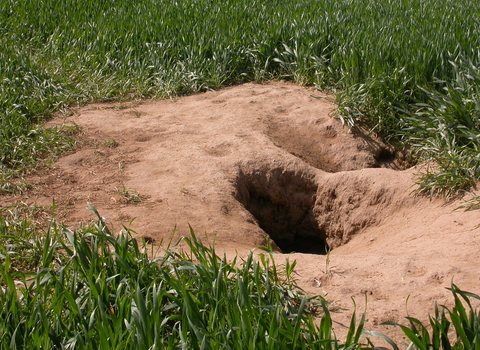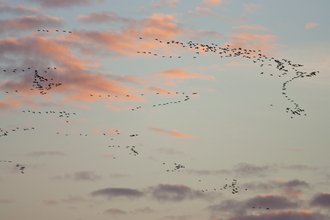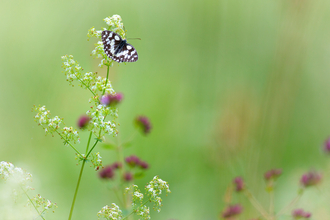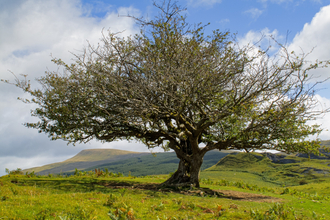We know that many animals make nests, not just birds. They do this to be safe and warm, to stay well out of the way from predators and to protect them from bad weather. Here’s what some of our favourite animals would have to say about their homes…
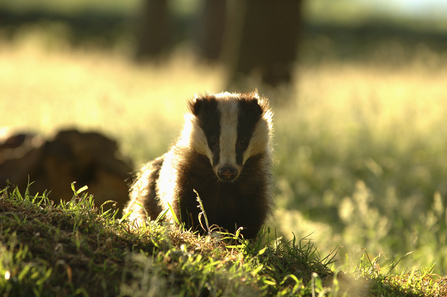
Andrew Parkinson/2020 VISION
Badger
A badger’s home is called a sett, but it is no ordinary home! It is an underground network of tunnels and chambers (“rooms”) which can be very old and big, where our family may have lived for many generations.
Our strong arms and claws are brilliant at digging out new tunnels and rooms. We like to dig in sandy soil, but under a harder layer, like rock, to keep the sett strong and protected. We really like fresh, clean, dry bedding. We bring in fresh dry grass, bracken, twigs and leaves and take out dirty or smelly bedding. If you found a sett entrance and took a big sniff, it would smell nice and sweet, not like a stinky fox burrow.
Badgers don’t hibernate but do hide away in their setts if the weather is really cold
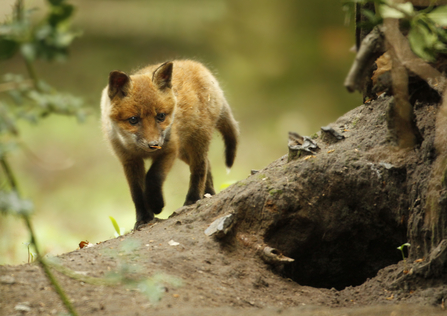
Jon Hawkins Surrey Hills Photography
Fox
My home is called a den and is not “stinky”! That smell is a scent mark so that other foxes know who it belongs to. Sometimes our den entrance looks a bit untidy. We sometimes pile up some soil to disguise the entrance and often our cubs leave their play-things, like chewed sticks, outside.
We leave the remains of our food, like old bones and scraps, outside too. We don’t need bedding, we just curl up nice and safe underground. We make a bigger den, called an earth, when we are rearing our young. We have lots of little dens around our territory as safe houses, to eat our prey (often rabbits, mice or birds) or to get away from danger or bad weather.
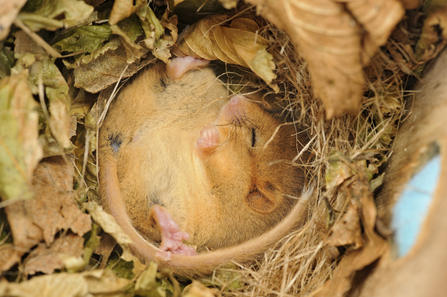
Terry Whittaker/2020VISION
Dormouse
We wouldn’t want a fox to find our nests! We usually build them safely tucked away in a hole in a tree or in thick bramble hedges. Dormice are very skilled at weaving nests out of bark and leaves. We fill them so they are nice and snug for our babies, which are called pinkies. I wonder if you can guess why they are called that?
As we usually come out at night, we often use the nest to safely snooze in during the day. We make a different nest to hibernate in. That is usually on the ground, protected by dead wood, autumn leaves, or moss. We are quite rare little animals and often live in old woodlands where there are plenty of trees, blackberries and honeysuckle.
It is against the law to disturb a dormouse nest, unless you have a special licence
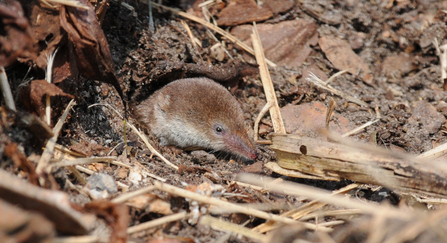
© Carl Wright
Common shrew
A shrew’s nest is usually at ground level and we make it under cover. Matted vegetation like long grass is good, as are fallen bark and branches. We like garden compost heaps too! We mostly make the nests in old mouse tunnels or other underground holes to save us having to dig. We rest up in our nests between feeding. Did you know that we have to eat every two hours, otherwise we will die!
We make a nursery nest from grasses and moss and line it with leaves. We can’t hibernate as we never get fat enough! We spend most of our lives searching for food and our young only take six weeks to be fully grown!

